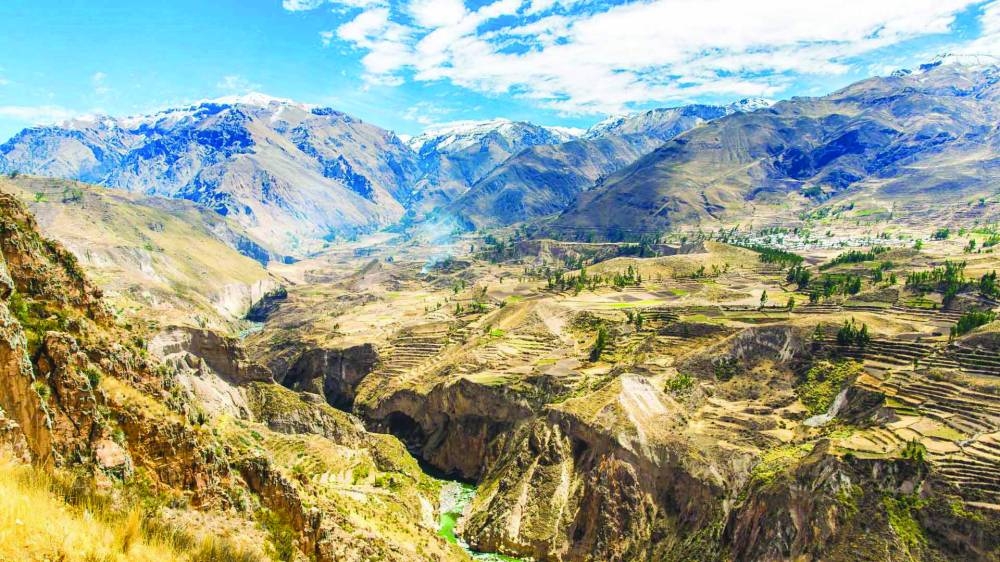One of the geographical features that attracts the world for its particular natural beauty are the canyons created by the riverbed, and formed by a process of excavating the earth over thousands of years. Among the deepest canyons on our planet we identify the Cotahuasi Canyon and the Colca Canyon, both located in the Andes of Peru, in the Arequipa Region, and with depths of 3,535 and 3,400 metres, respectively.
The Cotahuasi Canyon, also known as the Canyon of Wonders, is part of the Ocoña River basin, which in its 274km route forms valleys, waterfalls, and forests, to finally flow into the Pacific Ocean. This geographical feature is located in the Peruvian province of La Unión; territory located 379km from the city of Arequipa, at an altitude of 2,683 metres above sea level, harmoniously wrapped with a diverse nature in flora and fauna. On the other hand, in this region are also located the volcanoes: Coropuna, Sara Sara, Firura, and Auquihuato, with heights that exceed 5,000 metres.
In these places the visitor feels as if time has stopped, and where you can see the Andean condor, in its majestic flights with its wings that extend to more than 3 metres in length.
The inhabitants of this Peruvian area since ancient times have been communicated by roads and suspension bridges, built with their own materials and that until today remain as a legacy of these original populations of the South American country.
As for the Colca Canyon, Unesco in April 2019 included it in the International Network of Geoparks, together with volcanoes. This is also located in the aforementioned region of Arequipa, town of Chivay, where it runs along the Colca-Valle de Majes River and also flows into the Pacific Ocean.
It should be noted that the Colca Valley is one of the tourist destinations of Peru, with 140km long and 4,160 metres deep, making it one of the deepest canyons in the world. It is also surrounded by volcanoes, such as Coropuna, Ampato, and Sabancaya.
Ancient Peruvians already knew these places, so they domesticated plants and animals between 200 BC and 600 AD. It emphasises agriculture and the breeding of llamas and alpacas (Peruvian camelids). In fauna, highlights the Condor, the parihuana, the puma, the Andean fox, the vicuñas, the wild cat, tarucas (small deer), vizcachas, and owls, as well as 300 species of flora.
We must highlight the wide Peruvian gastronomic diversity, with multiple typical dishes of different ancestral flavours.
Mario Vargas Llosa, a Nobel Prize-winning author from Arequipa, once said that the Colca is “a valley of wonders.”

